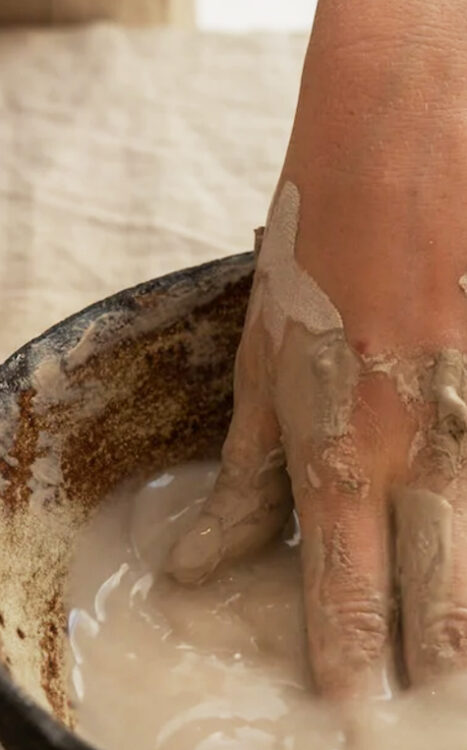ENGOBES & SLIB
WHAT IS ENGOBE?
Engobe is one of the oldest decoration techniques in ceramics. It is a liquid and consistent clay with added color. Usually it is applied on a leather- textured still not fired ceramic object.
With engobes one can obtain a smoother uniform surface, create artistic patterns, designs, etc.
USES OF ENGOBE
We can use any type of clay, red, white or colored, to completely or partially cover the ceramic object and provide an uniform finishing to the ceramic object., as well as to decorate de piece with an infinite number of colores.
In order to achieve greater adhesion, it should ideally include some of the clay used to create the ceramic object.
Engobes come in matte, silky matte, and glossy varieties depending on the amount of flux content.
COLORS USED FOR ENGOBES
Oxides, pigments, and/or the clay itself can be utilized as colors for engobes. Using various clays and natural hues and tones can provide us with countless number of other earthy colors as black, brown, red, roasted, gray, white, etc.
COLORING WITH PIGMENTS
Engobe can also be utilized by mixing metal oxides and pigments to considerably increase the variety of hues and colors.
PREPARING ENGOBE

If a slip is not chosen and prepared correctly, either the ceramic object or the slip will not work, it will not fix and may explode in the kiln.
As the shrinkage of the clay and the slip must be nearly same, the piece must still be wet, and their fire temperatures must match those of the ceramic object.
SELECTING THE INGREDIENTS
We will choose and weigh the many different ingredients that make up the formula.
It is crucial that the colours and/or oxides blend thoroughly with the dry powdered mud.
These will then be combined with water until they have a liquid and creamy consistency, and this paste or slip needs to be sieved to get rid of any lumps.
WHAT IS SLIP?
The difference between the engobe and the slip is that the former is thicker and free of color. It is typically employed to unite or assemble multiple fragments of a raw clay object.
APPLYING ENGOBE
In order to prevent the slip from peeling off or cracking as the ceramic piece dries, it must be applied when it is still flexible and in its leathered texture, meaning that it is not yet totally dry. If the piece is too wet it will not absorb the slip and it will break, and if it is too dry it will not adhere correctly.
UTENSILS
The engobe can be applied using a variety of tools, including rollers, sponges, textile stencils, rubber knobs, etc. It’s crucial to experiment and try different things until you get the desired outcomes.
The engobes typically provide a matte surface, but when mixed with flux-containing materials, the work can take on a glassy look.
The engobe is typically added before the piece is bisque, unlike other ornamental components for ceramic works. It can occasionally be applied on dry or biscuit pieces, but only in the thinnest of layers.

 ...
...